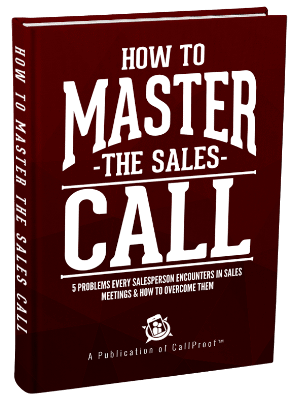
Search this Site
Categories
Free eBook
Grab our FREE 28-page guide, How to Master the Sales Call.
This guide outlines the 5 problems every salesperson encounters and how to overcome them.


Grab our FREE 28-page guide, How to Master the Sales Call.
This guide outlines the 5 problems every salesperson encounters and how to overcome them.

Grab our FREE 28-page guide, How to Master the Sales Call.
This guide outlines the 5 problems every salesperson encounters and how to overcome them.

CallProof CRM is The Original Mobile CRM for Inside and Outside Teams. Simple to use CRM packed with completely customizable features. CallProof CRM works with Gmail, G-Suite, Outlook and many more applications
Grab our FREE 28-page guide, How to Master the Sales Call.
This guide outlines the 5 problems every salesperson encounters and how to overcome them.